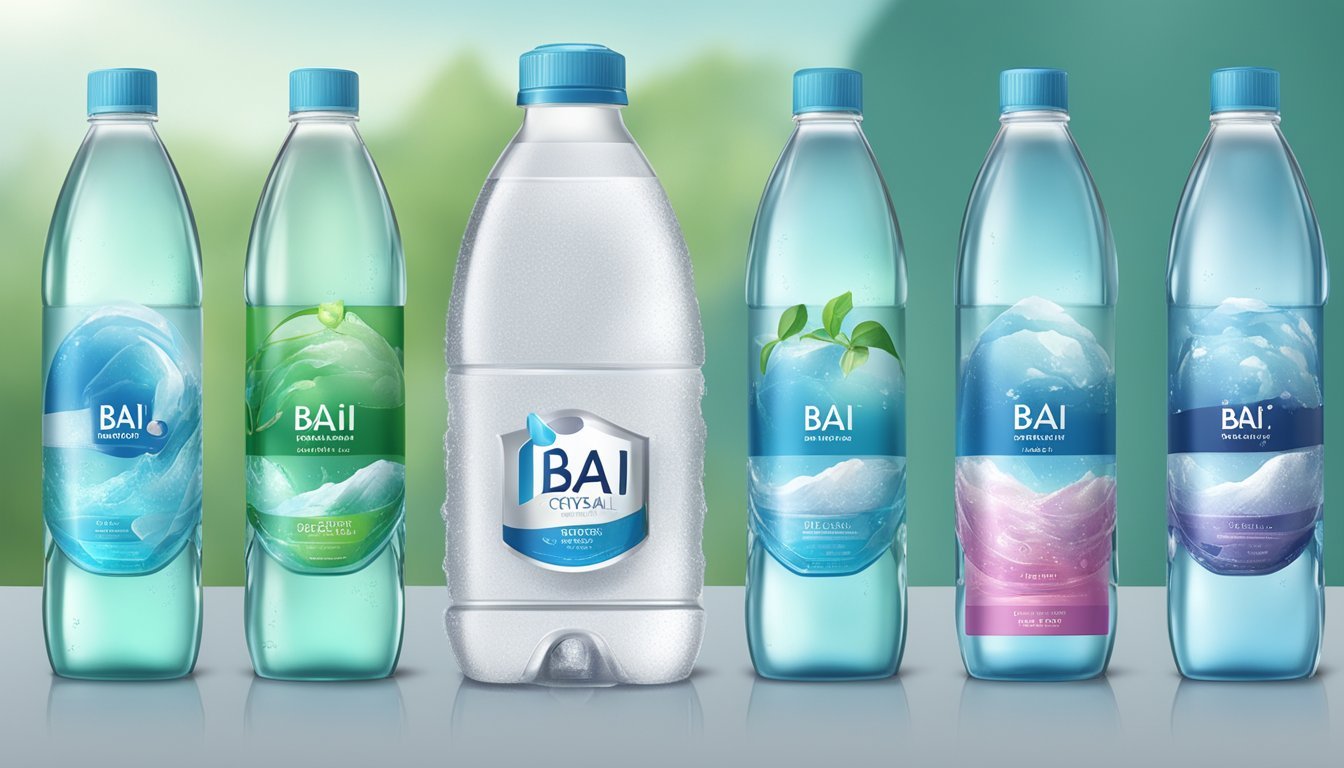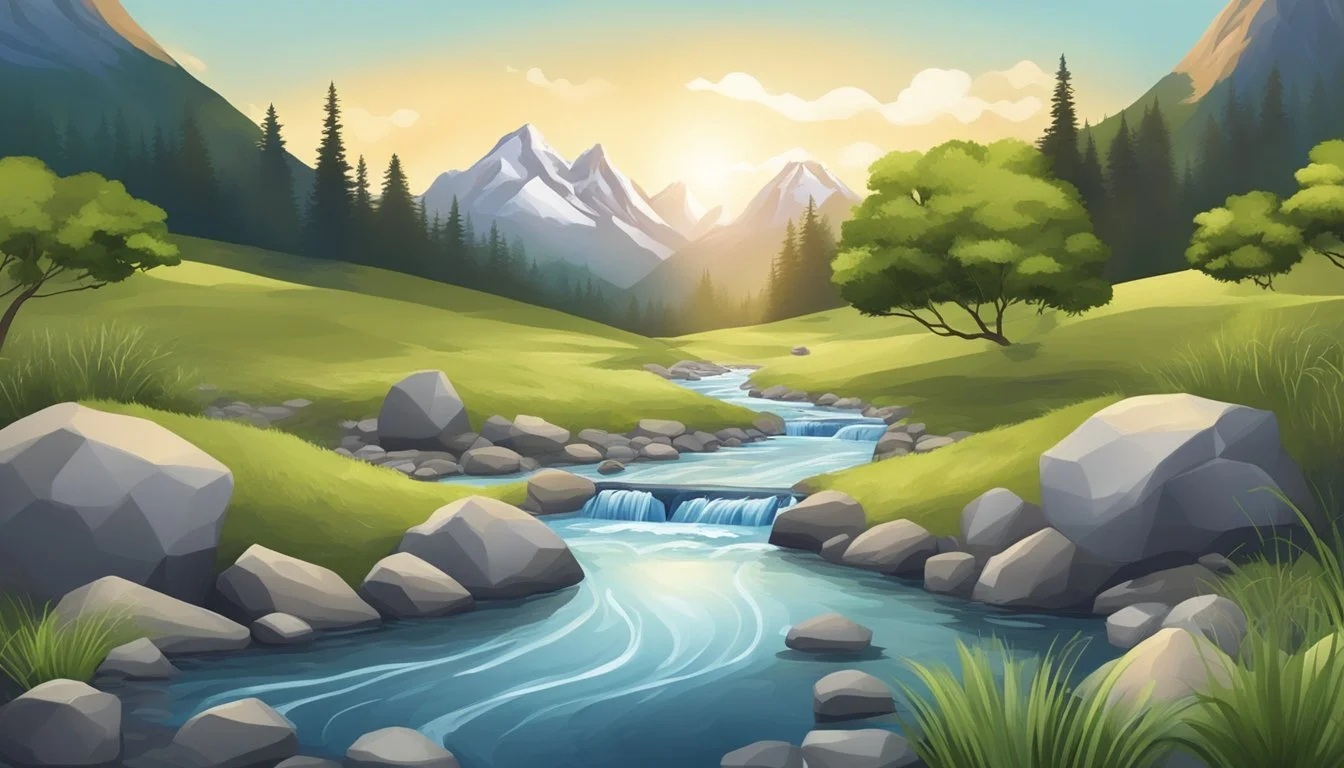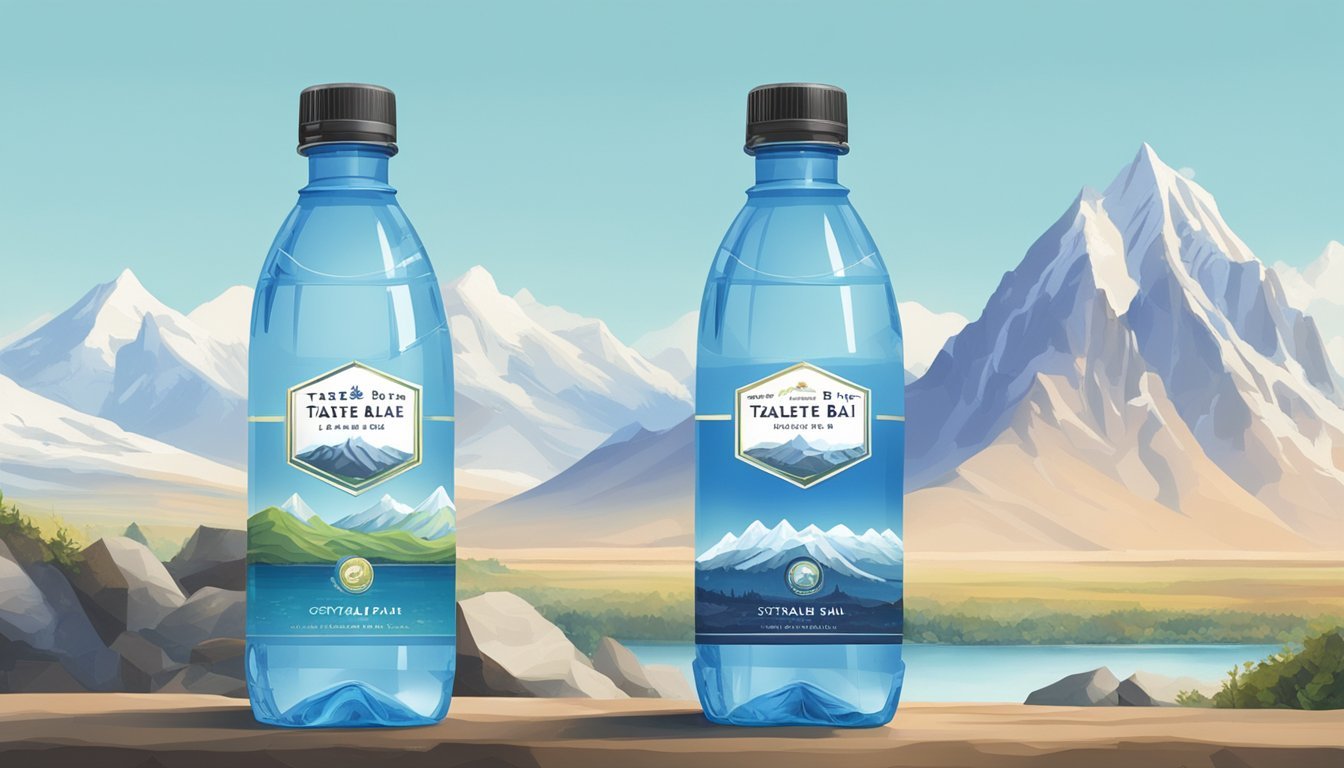Bai vs. Crystal Geyser
Which Bottled Water is Better for You?
When it comes to choosing the best bottled water, Bai and Crystal Geyser often come up as popular options. Bai is known for its antioxidant infusion and natural flavors, making it a unique choice for those seeking more than just hydration. On the other hand, Crystal Geyser offers spring water that is bottled at the source, providing a straightforward, pure drinking experience.
Crystal Geyser's water is relatively inexpensive and brings the classic taste of spring water. It is especially suitable for those who prefer their water to be clean and unaltered. Bai, with its added benefits and flavors, can also be appealing to those looking for a refreshing and health-conscious alternative.
Choosing between Bai and Crystal Geyser ultimately depends on individual preferences. If you value plain, natural water, Crystal Geyser might be the right pick. Those who enjoy flavored water with potential health benefits might lean towards Bai. Both brands cater to different tastes and needs, ensuring that consumers can find what best suits them.
Understanding Bottled Water
Bottled water is diverse, with various types sourced and treated differently. Understanding its basics, types, and regulatory standards is crucial for making informed choices.
The Basics of Bottled Water
Bottled water is water packaged in bottles for human consumption. This category includes spring water, purified water, and mineral water. It often originates from a natural spring, municipal sources, or other natural sources. The water undergoes various treatment processes to ensure safety and cleanliness. Spring water comes from naturally occurring springs, while purified water is typically sourced from municipal water and then further treated to remove impurities. The aim is to balance taste, purity, and mineral content.
Types of Bottled Water
Different types of bottled water serve various consumer needs. Spring water is collected directly from an underground formation and must flow naturally to the surface. Purified water is often municipal water refined through distillation, deionization, or reverse osmosis. Mineral water contains minerals naturally present at the source and is left untreated except for the removal of solid particles. Each type has distinct characteristics, impacting taste and perceived health benefits. Natural spring water focuses on its untouched purity, whereas purified water emphasizes the removal of contaminants.
Regulation and Standards
Bottled water is regulated to ensure safety and quality. In the United States, the FDA oversees bottled water, holding it to standards similar to municipal tap water. These regulations mandate specific labeling, source disclosure, and contaminant limits. Bottled water companies must also follow Good Manufacturing Practices (GMP) to maintain hygiene and quality. Furthermore, organizations like the Environmental Working Group (EWG) assess the transparency and safety of bottled water manufacturers, ensuring that the water meets health and safety standards.
The strict regulatory framework aims to protect consumers by enforcing rigorous testing, stringent standards, and transparency in sourcing and treatment methods. This oversight helps maintain public trust in bottled water products.
Profile of Bai and Crystal Geyser
Bai and Crystal Geyser are two distinct bottled water brands with unique histories, missions, and product varieties. While Bai is known for infusing antioxidants into its water, Crystal Geyser prides itself on natural spring water sourced directly from springs.
History and Mission
Bai Water was founded in 2009 by entrepreneur Ben Weiss. Initially focused on antioxidant beverages, Bai expanded into bottled water with a mission to offer healthier alternatives and promote cleaner hydration options. Their name, "Bai," which means "pure" in Mandarin, signifies their dedication to purity and wellness.
Crystal Geyser was established in 1977. Unlike many other bottled water brands, it remains independently owned. The company's mission is to provide pure, natural spring water. With their slogan "Bottled at the Source," Crystal Geyser emphasizes transparency and maintains strict sourcing standards by bottling their water directly from natural springs.
Product Range and Varieties
Bai's product range includes a variety of antioxidant-infused beverages apart from their bottled water. Their water product, Bai Antioxidant Water, contains electrolytes and is enhanced with selenium, which is known for its health benefits. Bai's approach to hydration combines taste and health-conscious ingredients, appealing to consumers looking for enhanced water options.
Crystal Geyser offers several varieties of bottled water. Their flagship product is natural spring water, available in different sizes and packaging. They also provide sparkling water options, which come in various flavors such as lemon and lime. Crystal Geyser’s commitment to non-GMO and BPA-free packaging aligns with their focus on natural purity and environmental responsibility.
Health and Hydration
Understanding the health benefits and hydration capabilities of both Bai and Crystal Geyser is crucial for making an informed choice. Key points such as water quality, specific health claims, and the role of hydration and electrolytes will be discussed.
Water Quality and Health Benefits
Bai uses a blend of fruit juices and water which introduces antioxidants from coffee fruit extract and tea extract. These components can have beneficial effects on cognitive function and overall wellbeing.
Crystal Geyser sources its water from natural springs, ensuring the absence of artificial sweeteners and additives. The mineral content in Crystal Geyser can contribute to better hydration and potential health benefits due to the natural minerals present.
Both brands have distinct advantages, with Bai focusing on added health supplements and Crystal Geyser maintaining a natural mineral profile.
Evaluating Health Claims
Bai claims that its beverages are antioxidant-rich due to the coffee fruit extract. Antioxidants help combat oxidative stress in the body, which can contribute to better long-term health.
Crystal Geyser, meanwhile, emphasizes its source-origin purity and natural mineral content. The brand positions itself as providing clean, natural water without any artificial ingredients, which can appeal to those seeking a more straightforward hydration solution.
For both products, the lack of artificial ingredients and the presence of beneficial natural compounds are key selling points.
Hydration and Electrolyte Balance
Proper hydration involves maintaining a balance of water and electrolytes in the body.
Bai provides hydration with a minimal calorie count, containing just 1 gram of sugar and about ten calories per bottle. This can be important for those monitoring caloric intake while staying hydrated.
Crystal Geyser offers hydration through natural spring water, retaining essential minerals that can aid in maintaining electrolyte balance. These minerals are naturally occurring, making it a more straightforward option for hydration.
Both Bai and Crystal Geyser offer distinct hydration benefits, catering to different needs based on their ingredient profiles and health claims.
Environmental Considerations
Both Bai and Crystal Geyser have notable differences in their approaches to sustainability and packaging. These aspects influence their environmental impact significantly. Let’s explore each in more detail.
Resource Sustainability
Bai sources water responsibly, emphasizing sustainable water use and minimizing the environmental footprint associated with water extraction. They ensure water comes from aquifers with stable supplies, avoiding the depletion of local resources.
Crystal Geyser, while promoting its water as natural spring water, emphasizes minimal processing. However, assessments have shown concerns about its sustainability practices. The Environmental Working Group (EWG) pointed out that Crystal Geyser received a lower score in sustainability metrics due to less transparency and documentation on their resource management practices.
The choice of source and the methods of extraction play a significant role in determining each brand's commitment to environmental sustainability.
Packaging and Impact on the Environment
Bai's packaging strategy includes a focus on reducing plastic usage. They have been shifting towards using recycled materials and advocating for more sustainable packaging solutions, including plans for biodegradable bottles. This effort helps decrease the environmental impact associated with plastic waste.
Crystal Geyser, in contrast, predominantly uses plastic bottles, which are known for their significant environmental impact due to the pollution and energy required for production. Efforts by Crystal Geyser to incorporate recycled plastic are limited, and their packaging has not evolved as significantly compared to some competitors.
Thus, while Bai is making strides toward eco-friendly packaging, Crystal Geyser’s reliance on plastic contributes to a higher environmental footprint.
Taste and Palate
When comparing Bai and Crystal Geyser, their taste and palate are significant points of differentiation. Each brand offers distinct characteristics that cater to different preferences. Understanding their flavor profiles and the outcomes of various blind taste tests can help in making an informed choice.
Flavor Profiles
Bai Water: Known for its flavorful infusions, Bai offers a range of fruit-enhanced water options. These drinks boast a variety of natural flavors such as pomegranate, blueberry, and acai. The taste is typically sweet without being overwhelming, maintaining a light, refreshing texture. Bai's use of natural sweeteners like stevia contributes to a balanced flavor profile that appeals to those seeking both hydration and taste.
Crystal Geyser: This brand provides a more traditional spring water experience. Crystal Geyser is praised for its crisp, clean taste, but some reviewers have noted a slight salinity. The texture is generally smooth, making it a straightforward option without additional flavors. Unlike Bai, it lacks the fruity notes and sweetness. It's commonly chosen for its pure, unaltered taste.
Blind Taste Tests
In blind taste tests, Bai generally stands out due to its distinctive flavors. It's often appreciated for the balance and blend of natural fruit infusions. The presence of sweeteners like erythritol and stevia can sometimes be polarizing, with some finding it pleasantly sweet and others preferring a less sweet option.
Crystal Geyser, on the other hand, tends to be recognized for its straightforwardness. Participants who prefer traditional water often rate it higher for its lack of additives and natural spring water taste. However, its slight skunky taste has been pointed out by some, impacting its ratings in taste tests.
Conducting a blind taste test shows that individual preferences play a crucial role. People seeking fruity, enhanced water tend to favor Bai, while those preferring pure spring water might lean towards Crystal Geyser.
Comparative Analysis
This comparative analysis evaluates the key aspects of Bai and Crystal Geyser bottled waters, focusing on their pH levels, mineral content, brand reputation, consumer preferences, and pricing.
pH and Mineral Content Comparison
Bai water is known for its variety of infused beverages with added antioxidants. Studies show that the pH level of Bai water typically ranges around 7, making it neutral. In contrast, Crystal Geyser, often marketed as spring water, generally has a slightly alkaline pH level, ranging from 7.6 to 8.2.
Crystal Geyser does not usually add minerals to its water, retaining a natural taste. On the other hand, Bai's drinks, being infused with different flavors and antioxidants, may include various minerals and additives. This makes Bai not purely water but rather a flavored beverage with enhanced properties.
Brand Reputation and Consumer Preferences
Bai and Crystal Geyser cater to different market segments. Bai is popular for its range of flavored, antioxidant-infused waters, appealing to health-conscious consumers seeking hydration with added benefits. Crystal Geyser, known for its affordability and natural spring water, targets consumers looking for a straightforward, no-frills bottled water.
Crystal Geyser has built a reputation on purity and natural sourcing, often highlighted by their "bottled at the source" claims. Bai, owned by the multinational beverage company PepsiCo, benefits from extensive distribution networks and a strong presence in the flavored water market.
Pricing and Affordability
Crystal Geyser is often recognized for its affordability. It positions itself as an accessible option for consumers who need reliable, natural spring water without a hefty price tag. Prices for Crystal Geyser are generally lower compared to other premium water brands.
Bai tends to be priced higher due to its added ingredients and marketed health benefits. Consumers are paying for the extra features like antioxidants and natural flavors. This positioning makes Bai more of a premium product in the bottled beverage market.
In conclusion, while Bai offers a flavorful option with added benefits, Crystal Geyser provides a cost-effective and natural alternative, making it a suitable choice for those prioritizing simplicity and budget.
Additional Features and Brand Innovations
The differences between Bai and Crystal Geyser extend beyond taste and ingredients. Bai includes functional additives aimed at enhancing health, while Crystal Geyser focuses on natural extraction methods from pristine sources.
Functional Additives in Bai
Bai water includes several additives that appeal to health-conscious consumers. One of its key features is the infusion of antioxidants derived from coffee fruit extract, which can help combat oxidative stress.
The drink also contains vitamin C, essential for immune function and skin health. Additionally, Bai offers flavored varieties with natural flavors and is vegan and low in calories. With less than 10 calories per serving and sweetened with erythritol and stevia leaf extract, it presents a healthier alternative to sugary beverages.
Bai also incorporates 1 gram of sugar and no caffeine, aiming for a balance that complements a healthy diet without unnecessary additives. Therefore, it stands out as a functional beverage rather than just plain water.
Crystal Geyser's Source and Extraction Methods
Crystal Geyser prides itself on sourcing its water from natural springs. Unlike Bai, which includes various additives, Crystal Geyser focuses on the purity of its water right from the source.
The extraction process involves capturing water directly from pristine aquifers, ensuring minimal processing and retaining natural minerals. This method results in water that is free of artificial sweeteners, preservatives, or added nutrients.
One of Crystal Geyser's selling points is its low environmental impact. The company emphasizes eco-friendly bottling practices and sustainability. For health-conscious consumers who prefer natural, unaltered water, Crystal Geyser remains a popular choice.
By comparing Bai’s health-oriented additives and Crystal Geyser’s natural extraction methods, consumers can choose based on their priorities: enhanced functionality or pure, natural water.
Conclusion
When comparing Bai Water and Crystal Geyser, several factors come into play.
Bai Water offers a unique blend of hydration and minimal calories. It contains antioxidants from coffee fruit and tea extracts. Consumers who prefer a low-calorie option with additional health benefits often choose Bai Water.
Crystal Geyser is known for its affordability and availability. It is bottled at the source, with claims of being spring water. Although it may not have a standout taste, it remains a popular choice for basic hydration needs.
Comparison Overview
Feature Bai Water Crystal Geyser Calories 10 calories per bottle 0 calories Sweeteners No artificial sweeteners None Antioxidants Yes (from extracts) No Taste Unique and mild Basic and neutral Availability Widely available Widely available Price Higher compared to Crystal Geyser Affordable
Consumers looking for additional nutrients and a slight flavor may favor Bai Water. Meanwhile, those seeking an economical and straightforward option might prefer Crystal Geyser. Each has its own set of attributes, catering to different preferences and needs.
Bold or italic tags can highlight key points within the content, providing clear, concise information. The table format ensures an easy comparison, helping readers make an informed decision.





